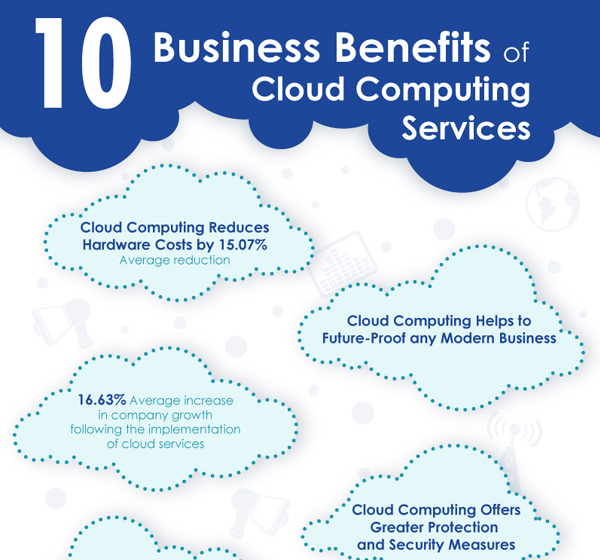Unraveling the Layers of Cloud Technology
Cloud technology has become an integral part of modern computing, revolutionizing the way businesses and individuals manage and utilize data. The “essentials of cloud” encompass various layers, each offering distinct services and advantages. Infrastructure-as-a-Service (IaaS), Platform-as-a-Service (PaaS), and Software-as-a-Service (SaaS) are the primary layers that makeup cloud technology.
Infrastructure-as-a-Service (IaaS) refers to the foundational layer of cloud technology, providing virtualized computing resources such as servers, storage, and networking infrastructure. IaaS enables organizations to scale their IT infrastructure on-demand, reducing capital expenditures and streamlining operations.
Platform-as-a-Service (PaaS) builds upon IaaS, offering a complete development and deployment environment for applications. PaaS includes tools, libraries, and infrastructure required to build, test, and deploy software, allowing developers to focus on creating innovative solutions without worrying about the underlying infrastructure.
Software-as-a-Service (SaaS) represents the topmost layer of cloud technology, providing users with ready-to-use applications accessible via the internet. SaaS eliminates the need for local installations and maintenance, enabling organizations to leverage cutting-edge software at a fraction of the cost. Common examples of SaaS include email services, customer relationship management (CRM) tools, and productivity suites.
By understanding the “essentials of cloud” and the different layers of cloud technology, businesses and individuals can make informed decisions about which services best meet their needs. Embracing cloud technology offers numerous benefits, including cost savings, scalability, flexibility, and enhanced collaboration, all of which contribute to the digital transformation of organizations across industries.
Key Benefits of Adopting Cloud Solutions
The “essentials of cloud” encompass a wide range of benefits for businesses and individuals alike. By adopting cloud solutions, organizations can achieve cost savings, scalability, flexibility, and enhanced collaboration. Real-life examples and success stories demonstrate the transformative impact of cloud technology on businesses across industries.
Cost savings is one of the most significant benefits of cloud adoption. Cloud services eliminate the need for expensive on-premises hardware, maintenance, and upgrades. Organizations can reduce capital expenditures and operating costs by paying only for the resources they consume. Additionally, cloud providers offer various pricing models, including pay-as-you-go, reserved instances, and spot instances, enabling businesses to optimize their spending.
Scalability and flexibility are inherent to cloud technology. Cloud services allow organizations to quickly and easily scale resources up or down based on demand, ensuring optimal performance and minimizing waste. This scalability empowers businesses to adapt to changing market conditions and customer needs, fostering innovation and growth. Furthermore, cloud platforms support a wide range of operating systems, frameworks, and tools, providing developers with the flexibility to build and deploy applications using their preferred technologies.
Enhanced collaboration is another key benefit of the “essentials of cloud.” Cloud-based tools and applications enable real-time, remote access to data and resources, breaking down geographical barriers and facilitating seamless teamwork. By adopting cloud solutions, organizations can improve communication, streamline workflows, and accelerate decision-making, ultimately driving productivity and efficiency.
Numerous success stories highlight the positive impact of cloud technology on businesses. For instance, a leading e-commerce company leveraged cloud infrastructure to handle massive traffic spikes during peak shopping seasons, ensuring a smooth and enjoyable customer experience. Similarly, a global software development firm adopted a cloud-based project management tool to streamline collaboration among its globally distributed teams, significantly reducing project timelines and improving overall quality.
In conclusion, the “essentials of cloud” offer numerous benefits, including cost savings, scalability, flexibility, and enhanced collaboration. By embracing cloud solutions, organizations can transform their operations, reduce costs, and drive innovation. Real-life examples and success stories underscore the potential of cloud technology to positively impact businesses across industries.
Selecting the Right Cloud Service Provider
When it comes to the “essentials of cloud,” choosing the right cloud service provider is crucial for businesses and individuals alike. Key factors to consider include security, compliance, support, and pricing. By comparing popular cloud service providers such as Amazon Web Services (AWS), Microsoft Azure, and Google Cloud Platform (GCP), readers can make informed decisions about which provider best meets their needs.
Security is a top priority when selecting a cloud service provider. Businesses should look for providers that offer robust security features, such as encryption, firewalls, and intrusion detection systems. Compliance is another essential factor, as businesses must adhere to various regulations, such as HIPAA for healthcare or PCI-DSS for payment processing. Providers with certifications in these areas can help ensure compliance and minimize risk.
Support is another critical aspect to consider when choosing a cloud service provider. Businesses should look for providers that offer 24/7 support, as well as comprehensive documentation and resources. Providers with extensive support networks and active user communities can help businesses quickly resolve issues and maximize their cloud investments.
Pricing is also an important consideration when selecting a cloud service provider. Businesses should carefully evaluate the pricing models of each provider, as well as any additional fees or charges. By understanding the total cost of ownership, businesses can make informed decisions about which provider offers the best value for their needs.
Amazon Web Services (AWS) is a popular choice for businesses seeking a comprehensive cloud platform. AWS offers a wide range of services, including computing, storage, databases, and analytics. Additionally, AWS provides robust security features, compliance support, and global data centers, making it an ideal choice for businesses of all sizes.
Microsoft Azure is another strong contender in the cloud market, offering a wide range of services and tools for businesses. Azure’s integration with Microsoft products, such as Office 365 and Dynamics, makes it an attractive choice for businesses already using Microsoft technologies. Azure also offers robust security features, hybrid cloud support, and extensive documentation and resources.
Google Cloud Platform (GCP) is a rapidly growing cloud provider, offering a wide range of services and tools for businesses. GCP’s focus on artificial intelligence, machine learning, and data analytics makes it an attractive choice for businesses seeking innovative cloud solutions. GCP also offers robust security features, flexible pricing models, and extensive documentation and resources.
In conclusion, when considering the “essentials of cloud,” choosing the right cloud service provider is crucial. By evaluating factors such as security, compliance, support, and pricing, businesses can make informed decisions about which provider best meets their needs. Popular providers such as AWS, Azure, and GCP offer a wide range of services and tools, making them ideal choices for businesses seeking to maximize their cloud investments.
How to Successfully Migrate to the Cloud: A Step-by-Step Guide
Migrating to the cloud can offer numerous benefits for businesses, including cost savings, scalability, and enhanced collaboration. However, the migration process can be complex, and businesses must take a strategic approach to ensure a smooth transition. By following this step-by-step guide on the “essentials of cloud” migration, businesses can minimize downtime and maximize the benefits of their cloud investments.
Step 1: Assess Your Current IT Infrastructure
Before migrating to the cloud, businesses must assess their current IT infrastructure. This includes evaluating their hardware, software, and data storage systems. By understanding their current infrastructure, businesses can identify which applications and data are suitable for migration and which cloud deployment model (public, private, or hybrid) best meets their needs.
Step 2: Select the Right Migration Strategy
There are several migration strategies to choose from, including lift-and-shift, re-platforming, and re-architecting. Lift-and-shift involves moving applications and data to the cloud without making significant changes. Re-platforming involves modifying applications to take advantage of cloud-native features, while re-architecting involves redesigning applications from the ground up to be cloud-native. Businesses should select the migration strategy that best aligns with their goals, budget, and timeline.
Step 3: Choose a Cloud Service Provider
Selecting the right cloud service provider is critical to the success of a cloud migration. Businesses should evaluate providers based on factors such as security, compliance, support, and pricing. Popular providers such as Amazon Web Services (AWS), Microsoft Azure, and Google Cloud Platform (GCP) offer a wide range of services and tools, making them ideal choices for businesses seeking to maximize their cloud investments.
Step 4: Plan for Data Migration
Data migration is a critical aspect of any cloud migration. Businesses should plan for data migration carefully, including identifying which data to migrate, how to migrate it, and how to ensure data integrity during and after the migration. Businesses should also consider implementing data backup and disaster recovery solutions to minimize the risk of data loss during the migration process.
Step 5: Test the New Cloud Environment
Before going live with the new cloud environment, businesses should thoroughly test it to ensure it meets their needs and performs as expected. Testing should include evaluating the performance, security, and scalability of the new environment. Businesses should also test their disaster recovery and backup solutions to ensure they can quickly and easily recover data in the event of an outage or failure.
Step 6: Monitor and Optimize Cloud Usage
After migrating to the cloud, businesses should continuously monitor and optimize their cloud usage. This includes tracking cloud costs, identifying cost-saving opportunities, and implementing best practices for cloud security and data protection. By monitoring and optimizing their cloud usage, businesses can ensure they are getting the most value from their cloud investments and maximizing their return on investment (ROI).
In conclusion, migrating to the cloud can offer numerous benefits for businesses, but the migration process can be complex. By following this step-by-step guide on the “essentials of cloud” migration, businesses can minimize downtime and maximize the benefits of their cloud investments. From assessing their current IT infrastructure to monitoring and optimizing cloud usage, businesses must take a strategic approach to ensure a successful cloud migration.
Securing Your Cloud Environment: Best Practices for Protecting Sensitive Data
As businesses continue to adopt cloud solutions, cloud security has become a top priority. Protecting sensitive data in the cloud requires a strategic approach that includes identity and access management, data encryption, and security monitoring. By following these best practices, businesses can maintain a secure cloud environment and ensure the confidentiality, integrity, and availability of their data.
Identity and Access Management
Identity and access management (IAM) is a critical aspect of cloud security. IAM involves managing user identities and controlling their access to cloud resources. By implementing robust IAM policies, businesses can prevent unauthorized access and ensure that only authorized users can access sensitive data.
Best practices for IAM include implementing multi-factor authentication (MFA), using least privilege access, and regularly reviewing access logs. MFA adds an extra layer of security by requiring users to provide two or more forms of authentication, such as a password and a fingerprint. Least privilege access involves granting users the minimum level of access necessary to perform their job functions. Regularly reviewing access logs can help businesses detect and respond to suspicious activity quickly.
Data Encryption
Data encryption is another critical aspect of cloud security. Encrypting data in transit and at rest can help prevent unauthorized access and ensure the confidentiality of sensitive data. By implementing robust encryption policies, businesses can protect their data from cyber threats and maintain regulatory compliance.
Best practices for data encryption include using encryption keys, implementing encryption gateways, and regularly testing encryption algorithms. Encryption keys are used to encrypt and decrypt data, while encryption gateways can help ensure that data is encrypted as it moves between cloud resources. Regularly testing encryption algorithms can help businesses ensure that their encryption policies are effective and up-to-date.
Security Monitoring
Security monitoring is essential for detecting and responding to security threats in the cloud. By implementing robust security monitoring policies, businesses can quickly detect and respond to suspicious activity, preventing data breaches and other security incidents.
Best practices for security monitoring include implementing intrusion detection systems (IDS), using security information and event management (SIEM) tools, and regularly reviewing security logs. IDS can help detect and respond to suspicious network activity, while SIEM tools can help businesses analyze and correlate security events from multiple sources. Regularly reviewing security logs can help businesses detect and respond to security threats quickly.
In conclusion, securing a cloud environment requires a strategic approach that includes identity and access management, data encryption, and security monitoring. By following these best practices, businesses can maintain a secure cloud environment and ensure the confidentiality, integrity, and availability of their data. As the “essentials of cloud” continue to evolve, businesses must stay informed about new developments and consider how they can be applied to their cloud environments to maintain the highest level of security.
Optimizing Cloud Costs: Strategies and Best Practices
Cloud computing offers numerous benefits, including cost savings, scalability, and flexibility. However, without proper management, cloud costs can quickly spiral out of control. By implementing best practices for cloud cost optimization, businesses can reduce their cloud spending and maximize their return on investment (ROI). In this article, we will explore strategies and best practices for optimizing cloud costs, such as rightsizing instances, using reserved instances, and implementing cost-effective storage solutions.
Rightsizing Instances
Rightsizing instances involves selecting the right instance type and size for your workload. By selecting the appropriate instance type and size, businesses can ensure that they are not paying for resources they do not need. Rightsizing instances can help businesses reduce their cloud spending by up to 30%. To rightsize instances, businesses should regularly monitor their cloud usage and adjust their instance type and size accordingly.
Using Reserved Instances
Reserved instances offer significant discounts for businesses that commit to using a certain amount of computing resources over a specified period. By committing to a certain level of usage, businesses can save up to 75% compared to on-demand pricing. However, businesses should carefully evaluate their usage patterns and ensure that they can meet the commitment before purchasing reserved instances.
Implementing Cost-Effective Storage Solutions
Cloud storage offers numerous benefits, including scalability, durability, and availability. However, without proper management, cloud storage costs can quickly add up. To reduce cloud storage costs, businesses should consider implementing cost-effective storage solutions, such as using object storage for infrequently accessed data and implementing lifecycle management policies to automatically move data to cheaper storage tiers.
Monitoring and Analyzing Cloud Usage
Monitoring and analyzing cloud usage is essential for identifying cost-saving opportunities. By regularly monitoring their cloud usage, businesses can detect anomalies, optimize their resource utilization, and identify areas for improvement. To monitor and analyze cloud usage, businesses should consider using cloud cost management tools, such as AWS Cost Explorer, Azure Cost Management, or Google Cloud Cost Management.
Best Practices for Cloud Cost Optimization
To optimize cloud costs, businesses should follow these best practices:
- Regularly monitor cloud usage and adjust instance type and size accordingly.
- Consider using reserved instances for predictable workloads.
- Implement cost-effective storage solutions, such as object storage and lifecycle management policies.
- Use cloud cost management tools to monitor and analyze cloud usage.
- Implement policies for tagging and cost allocation to track cloud spending.
- Regularly review and optimize cloud spending.
In conclusion, optimizing cloud costs is essential for businesses that want to maximize their return on investment (ROI) in cloud computing. By implementing best practices for cloud cost optimization, businesses can reduce their cloud spending and ensure that they are getting the most value from their cloud investments. As the “essentials of cloud” continue to evolve, businesses must stay informed about new developments and consider how they can be applied to their cloud environments to optimize cloud costs and maintain a competitive edge.
Staying Up-to-Date with Cloud Innovations: Trends and Developments to Watch
The world of cloud technology is constantly evolving, with new trends and innovations emerging all the time. To stay competitive and get the most out of their cloud environments, businesses must stay informed about the latest developments and consider how they can be applied to their cloud strategies. In this article, we will explore some of the most exciting trends and innovations in cloud technology, including artificial intelligence (AI), machine learning (ML), containers, and edge computing.
Artificial Intelligence (AI) and Machine Learning (ML)
AI and ML are transforming the way businesses operate, enabling them to automate processes, make data-driven decisions, and improve customer experiences. Cloud service providers are increasingly offering AI and ML tools and services, making it easier for businesses to leverage these technologies without the need for extensive expertise or resources.
Containers
Containers are a lightweight form of virtualization that enable businesses to package and deploy applications and their dependencies as a single unit. Containers offer numerous benefits, including improved portability, scalability, and consistency. Cloud service providers are offering container services, such as AWS Fargate and Google Kubernetes Engine, to help businesses manage and orchestrate containers in the cloud.
Edge Computing
Edge computing involves processing data and performing computations closer to the source of the data, rather than in a centralized data center or cloud. Edge computing can help businesses reduce latency, improve performance, and save on bandwidth costs. Cloud service providers are offering edge computing services, such as AWS Outposts and Azure Stack, to help businesses extend their cloud environments to the edge.
Best Practices for Staying Up-to-Date with Cloud Innovations
To stay up-to-date with the latest cloud innovations, businesses should follow these best practices:
- Regularly attend industry events and conferences to learn about new developments and trends.
- Follow industry publications and blogs to stay informed about the latest news and insights.
- Experiment with new technologies and services in a sandbox environment to evaluate their potential benefits and limitations.
- Collaborate with cloud service providers and technology partners to stay informed about new offerings and developments.
- Develop a cloud innovation strategy that aligns with business goals and priorities.
In conclusion, staying up-to-date with the latest cloud innovations is essential for businesses that want to stay competitive and get the most out of their cloud environments. By following the best practices outlined in this article, businesses can stay informed about new developments and trends, experiment with new technologies and services, and develop a cloud innovation strategy that aligns with their business goals and priorities. As the “essentials of cloud” continue to evolve, businesses must stay vigilant and adaptable to take advantage of new opportunities and stay ahead of the curve.





